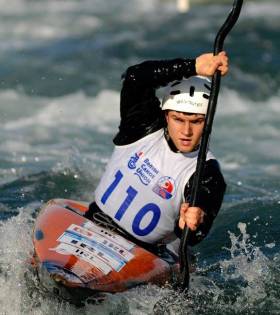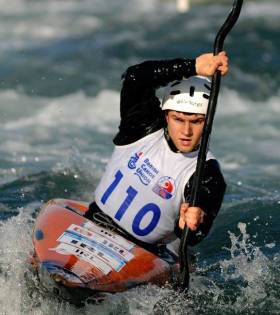Displaying items by tag: Eoin Teague
Ireland Miss Out on Semi-Final Qualification at World Championships
#Canoeing: Ireland’s three competitors in the men’s K1 (racing kayak) failed to make it through to the semi-finals of the canoe slalom World Championships in Spain today. Eoin Teague, who had a good first run, had five touches in his second – including two on the last three gates – and fell out of contention. Oisin Farrell and Sam Curtis, who both had had two touches each, were also not fast enough to make the top 10 who made it through from this round.
Caoimhe O’Ferrall did not make it through in the women’s C1.
Canoe Slalom World Championships, La Seu d’Urgell, Spain (Irish interest)
Men
K1 – First Run (Top 20 qualify directly for Semi-Finals): 43 E Teague 94.91 seconds, 98 S Curtis 151.52, 100 O Farrell 153.04. Second Run (Top 10 qualify): 37 Curtis 101.25, 43 Farrell 104.69, 45 Teague 105.30.
Women
C1 – First Run (Top 20 qualify directly for Semi-Finals): 64 C O’Ferrall 287.36. Second Run (Top 10 qualify): 39 O’Ferrall 184.60
Teague Best of Irish In First Run at World Championships
#Canoeing: Eoin Teague was the top Ireland performer after the first run of the men’s K1 at the canoe slalom World Championships. Teague negotiated the course with no touches. His time of 94.91 put him in the lead – but there is a huge entry, and he was pushed out of the top 20 which would have seen him qualify at this stage. Sam Curtis and Oisin Farrell were both given 50-second penalties for missing gates.
Caoimhe O’Ferrall took 64th in her first run in the women’s C1.
Canoe Slalom World Championships, La Seu d’Urgell, Spain (Irish interest)
Men
K1 – First Run (Top 20 qualify directly): 43 E Teague 94.91 seconds, 98 S Curtis 151.52, 100 O Farrell 153.04
Women
C1 – First Run (Top 20 qualify directly): 64 C O’Ferrall 287. 36
#Canoeing: Noel Hendrick put in a solid performance in the men’s K1 semi-final at the canoe slalom World Under-23 Championships in Krakow, Poland, this morning. He had no touches, but his time of 91.46 seconds left him outside the top 10 who went through to the final. He finished 22nd.
Eoin Teague was off the pace in his run and was then thrown completely out of the reckoning at the finish when he misjudged gate 20 and was given a 50-second penalty.
Canoe Slalom World Under-23 Championships, Krakow (Irish interest)
K1 Semi-Final: 22 N Hendrick 91.46 seconds; 36 E Teague 144.24
#Canoeing: Ireland will have three paddlers in the semi-finals of under-23 events at the canoe slalom World Under-23 and Junior Championships at Krakow in Poland. Liam Jegou finished 10th on his first run in the C1, though he made a mistake on gate nine and had to go at it a second time. Noel Hendrick and Eoin Teague also qualified from their first runs in the K1.
Canoe Slalom World U23 and Junior Championships, Krakow, Poland (Irish interest; qualifiers)
Men
Under-23 C1, First Run: 10 L Jegou 100.89.
K1, First Run: 12 N Hendrick 96.08; 25 E Teague 99.15.
Curtis Left To Rue Close Call at World Championships
#Canoeing: Sam Curtis was left to rue his close miss in the first run of the under-23 K1 at the canoe slalom World Championships in Krakow in Poland. The Irishman had to wait around for a protracted period as a technical issue was sorted out in the middle of the second run, and he did not do well. He touched five gates and missed one – gate 11. He was well outside the qualifying mark for the semi-finals. Noel Hendrick and Eoin Teague also missed out.
Canoe Slalom World Championships, Under-23 and Junior, Krakow, Poland (Irish interest; selected results)
Men
Under-23 K1 (racing kayak) – First Run (Top 30 Qualify): 35 S Curtis 86.08; 69 E Teague 137.71; 70 N Hendrick 138.45. Second Run (10 Qualify): 22 Hendrick 94.34; 35 Teague 137.21; 38 Curtis 144.47.
Junior K1 – First Run (30 Qualify): 50 S Ansell 110.33; 63 C McLarnon 150.29; 74 C Vaugh 214.05. Second Run: 28 Ansell 109.79; 38 Vaugh 148.67; 44 McLarnon 185.63.
Women
Under-23 K1 – First Run (15 Qualify): 30 C O’Ferrall 156.80. Second Run (5 Qualify): 23 O’Ferrall 251.16.

























